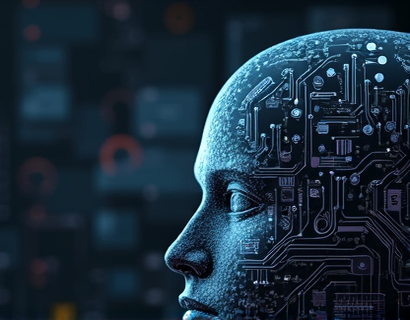AI-Powered Chat Interface: Your Safe and Educational Resource for Specialized Social Services Information
In today's fast-paced world, access to accurate and reliable information is more crucial than ever, especially when it comes to social services. Individuals, including adults, students, and young learners, often find themselves in need of specialized information that can help them navigate complex social systems. An AI-powered chat interface serves as a transformative tool, providing users with verified and educational content that ensures a safe and informative experience. This article explores how such a platform can empower users, simplify navigation to essential resources, and foster a deeper understanding of social services.
The Importance of Specialized Social Services Information
Social services encompass a wide range of programs and resources designed to support individuals and families in need. These services can include mental health support, housing assistance, educational resources, and more. However, the complexity of these services can often be overwhelming. Many individuals may not know where to start or how to access the information they need. This is where an AI-driven chat platform can make a significant difference.
By providing a centralized location for information, an AI chat interface can help users quickly find the resources they need. This is particularly important for vulnerable populations, such as low-income families, students, and individuals facing mental health challenges. Access to accurate information can empower these individuals to make informed decisions about their lives and well-being.
How AI-Powered Chat Interfaces Work
AI-powered chat interfaces utilize natural language processing (NLP) and machine learning algorithms to understand user queries and provide relevant responses. When a user interacts with the chat interface, the AI analyzes the input and retrieves information from a vast database of verified content. This process allows the platform to deliver accurate and timely information tailored to the user's needs.
One of the key advantages of an AI chat interface is its ability to learn and improve over time. As more users interact with the platform, the AI becomes better at understanding common queries and providing relevant answers. This continuous learning process ensures that the information remains up-to-date and accurate, which is essential in the ever-evolving field of social services.
Empowering Users with Verified Content
One of the primary goals of an AI-powered chat interface is to provide users with verified content. In the realm of social services, misinformation can lead to confusion and potentially harmful decisions. By ensuring that all information is sourced from reputable organizations and experts in the field, the platform can help users feel confident in the resources they are accessing.
For adults seeking information about social services, this means having access to resources that can help them navigate challenges such as unemployment, housing instability, or mental health issues. For students and young learners, the platform can provide age-appropriate information that is both educational and safe. This focus on verified content is crucial for fostering trust and ensuring that users can rely on the information they receive.
Creating a Safe Environment for Young Users
When it comes to providing information to children and young learners, safety is paramount. An AI chat interface can be designed with specific features to ensure that the content is appropriate for younger audiences. This may include filtering out sensitive topics or providing simplified explanations of complex issues.
Additionally, the platform can include educational resources that are tailored to different age groups. For example, younger children may benefit from interactive games or quizzes that teach them about social services in a fun and engaging way. Older students may require more in-depth information that helps them understand the various programs available to them and how to access them.
Simplifying Navigation to Essential Resources
One of the most significant challenges individuals face when seeking information about social services is navigating the vast array of resources available. An AI-powered chat interface simplifies this process by guiding users through a series of questions to identify their specific needs. This personalized approach ensures that users receive relevant information without feeling overwhelmed.
For example, a user may start by asking about housing assistance. The AI can then ask follow-up questions to determine the user's location, income level, and specific needs. Based on this information, the platform can provide a list of resources tailored to the user's situation, making it easier for them to take the next steps.
Fostering a Deeper Understanding of Social Services
Beyond simply providing information, an AI chat interface can help users develop a deeper understanding of social services and their importance. By offering educational content, such as articles, videos, and infographics, the platform can help users grasp the complexities of social systems and the resources available to them.
This educational component is particularly valuable for students and young learners, who may be unfamiliar with social services and their impact on society. By fostering a greater understanding of these issues, the platform can empower the next generation to engage with social services in a meaningful way, whether as recipients of support or as advocates for change.
Encouraging Informed Decision-Making
Access to accurate and verified information is essential for informed decision-making. An AI-powered chat interface provides users with the tools they need to make choices that positively impact their lives. By offering personalized recommendations and resources, the platform can help users weigh their options and consider the potential outcomes of their decisions.
For example, an individual seeking mental health support may be presented with various options, including therapy, support groups, and hotlines. The AI can provide information about each option, including the benefits and potential drawbacks, allowing the user to make an informed choice that aligns with their needs and preferences.
Building Community and Support Networks
In addition to providing information, an AI chat interface can help users connect with community resources and support networks. Many social services are delivered through local organizations, and an AI platform can facilitate connections between users and these resources.
For instance, the chat interface can provide information about local food banks, shelters, and mental health clinics. By helping users identify nearby resources, the platform can foster a sense of community and support, encouraging individuals to seek help when they need it.
Addressing Common Misconceptions About Social Services
There are many misconceptions surrounding social services that can prevent individuals from seeking the help they need. An AI-powered chat interface can play a crucial role in addressing these misconceptions by providing accurate information and dispelling myths.
For example, some individuals may believe that social services are only for those who are "poor" or "undeserving." The chat interface can provide information about the wide range of individuals and families who benefit from social services, including those facing temporary hardships or unexpected challenges. By educating users about the true purpose of social services, the platform can encourage more individuals to seek assistance when needed.
Enhancing Accessibility for All Users
Accessibility is a critical consideration when designing an AI-powered chat interface. The platform should be user-friendly and accessible to individuals with varying levels of technological proficiency. This includes providing clear instructions, using simple language, and ensuring that the interface is compatible with assistive technologies.
Additionally, the platform can offer multiple ways for users to access information, including text-based chat, voice commands, and visual aids. By enhancing accessibility, the platform can ensure that all users, regardless of their background or abilities, can benefit from the resources available.
Future Trends in AI-Powered Social Services
The field of social services is continually evolving, and AI technology is poised to play a significant role in shaping its future. As AI algorithms become more sophisticated, chat interfaces will be able to provide even more personalized and relevant information to users.
Future trends may include the integration of predictive analytics, which can help identify individuals at risk of needing social services before they reach a crisis point. This proactive approach could lead to earlier interventions and better outcomes for individuals and families.
Conclusion
An AI-powered chat interface represents a significant advancement in how individuals access information about social services. By providing verified and educational content, the platform empowers users to make informed decisions and navigate complex social systems with confidence. With a focus on safety, accessibility, and community support, this innovative tool has the potential to transform the landscape of social services, ensuring that individuals of all ages can access the resources they need to thrive.











































